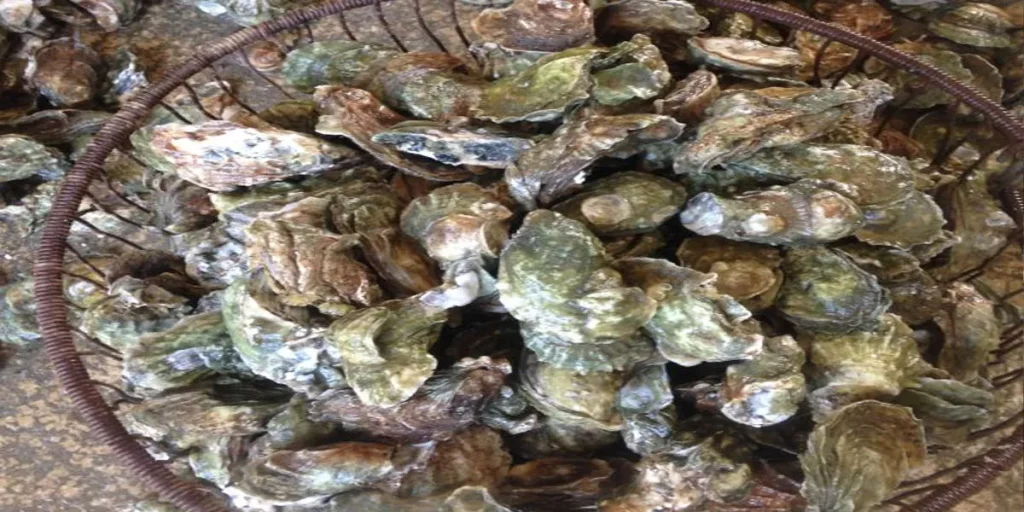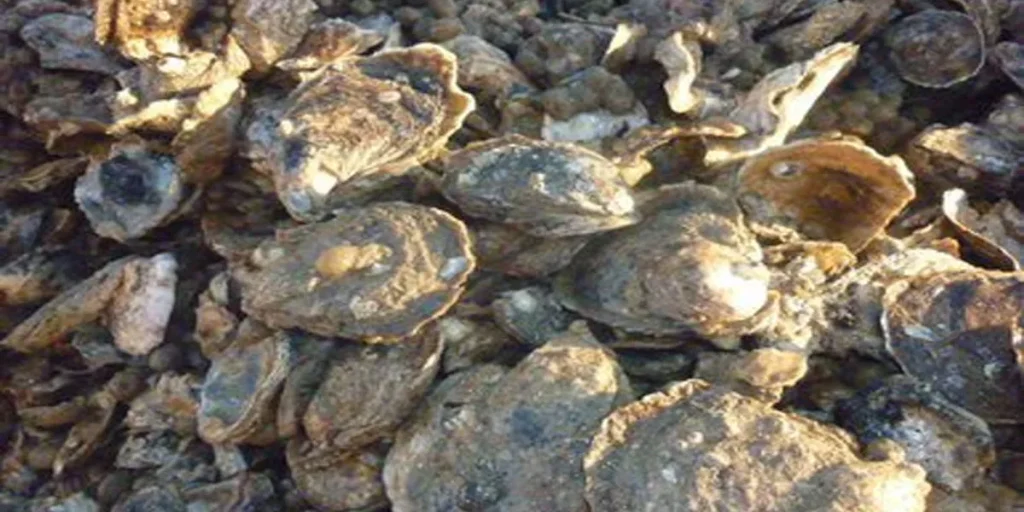A bushel of oysters typically weighs around 45 to 60 pounds. This weight can vary based on the size and type of oysters.
Embarking on the culinary adventure of fresh oysters requires a basic understanding of their measurements and weights.
With oysters being a delectable addition to many menus, knowing the weight of a bushel is essential for restaurants, fishermen, and seafood enthusiasts alike.
Sourcing fresh seafood often involves purchasing in traditional quantities like a bushel, which is a standard unit of measure in the industry.
This knowledge facilitates planning for events, calculating costs, and ensuring a sustainable approach to seafood consumption.
Whether for a family gathering or a large-scale feast, grasping the weight of a bushel of oysters simplifies the process of serving these ocean delicacies.
Measure Of The Sea: Bushel Of Oysters

Have you ever pictured a bushel of oysters? Picture this: piles of fresh oysters, still smelling of the sea.
A bushel measures many oysters – a feast for seafood lovers!
Origins Of The Bushel Measurement
The bushel started long ago. It’s an old measure for grains, fruits, and seafood.
Imagine a basket big enough to hold eight gallons. That’s a bushel!
- Gallons to Bushels: 4 pecks or 8 gallons equal one bushel.
- History Magic: Used since ancient times, the bushel has fed nations.
Oysters And Bushel: The Relationship
Oysters and bushels match like the sea and sand. One bushel might weigh between 45 to 60 pounds.
This depends on the oyster size.
| Oyster Size | Approx. Weight of Bushel |
|---|---|
| Small | 45 pounds |
| Medium | 50 pounds |
| Large | 60 pounds |
Size matters! Big oysters add extra weight to a bushel.
Understanding how much a bushel of oysters weighs requires looking at various elements.
Each bushel brings together a multitude of individual oysters, each with its unique size and weight.
Professionals in the seafood industry use these weight factors to estimate the total heft of a bushel. Let’s delve into the aspects influencing these aquatic delights.
Variability In Oyster Sizes
Different oysters grow to different sizes, often causing a bushel’s weight to fluctuate. Factors such as age, habitat, and the nutrients available impact their growth. Here’s what affects an oyster’s size:
- Age: Older oysters are usually bigger and heavier.
- Water Temperature: Warmer waters can speed up growth rates.
- Food Availability: Abundant algae and nutrients support growth.
Impact Of Oyster Species On Weight
The species of oyster also determines the weight of a bushel. There are five main species commercially harvested, and each varies in size:
| Oyster Species | Average Size |
|---|---|
| Eastern Oyster | 3-5 inches |
| Pacific Oyster | 4-8 inches |
| Kumamoto Oyster | 1-2 inches |
| Olympia Oyster | 1.5-3 inches |
| European Flat Oyster | 3-10 inches |
Different species not only vary in size but also in their shell shapes and densities. Thus, the species directly affects how much a bushel weighs.
Harvesting Variables

Understanding the weight of a bushel of oysters requires more than just a simple number. It encompasses a variety of factors that can significantly alter the final weight.
These nuances are critical for oyster farmers, commercial buyers, and enthusiasts alike. This section delves into the intricate world of oyster harvesting and the variables that impact their weight.
Seasonal Differences In Oyster Weight
Oysters are living organisms that respond to changes in their environment. Seasonal variations profoundly influence oyster growth and, consequently, their weight.
In colder months, oysters conserve energy and grow slower, resulting in lighter bushels. The warmer temperatures in spring and summer boost metabolism and growth, leading to heavier bushels.
- Winter: Slower growth, lighter oysters.
- Spring/Summer: Faster growth, heavier oysters.
Location And Environment
The specific spot where oysters are harvested can greatly affect their weight. Water salinity, nutrient availability, and the cleanliness of the water are paramount.
| Factor | Impact on Oyster Weight |
|---|---|
| Water Salinity | Higher salinity can lead to plumper oysters. |
| Nutrient Levels | More nutrients typically enable better oyster growth. |
| Water Cleanliness | Clean waters promote healthier, and often heavier, oysters. |
The interplay between seasons and the harvest location creates a complex matrix affecting an oyster’s weight.
Keeping these variables in mind is essential for anyone interested in the intricate details of oyster farming and commerce.
Weight Expectations
When buying oysters, knowing how much a bushel weighs is key. A bushel is a volume measurement, but the weight can vary.
Whether for a restaurant, a gathering, or a feast, understanding the average weight helps.
Typical Weight Range For A Bushel
Most oyster enthusiasts know that a bushel’s size doesn’t always tell the full story regarding weight. Expect a typical bushel of oysters to weigh between 45 to 60 pounds.
This range considers factors like oyster size, shell thickness, and moisture content. A bushel contains about 100 to 150 oysters, depending on these variables.
For better planning, it’s smart to think in terms of weight instead of just count.
Comparing Farmed Vs. Wild Oysters
Farmed and wild oysters may come in bushels, but their weights can differ significantly. Here’s a quick comparison:
- Farmed Oysters: Tend to be more uniform in size and shape. This means their weight is more predictable. A bushel generally leans towards the lighter side of the typical weight range.
- Wild Oysters: Vary greatly in size. They often have thicker shells and more irregular shapes, leading to a heavier bushel. Expect weights towards the upper end of the range.
Practical Insights For Buyers And Sellers
Understanding the weight of a bushel of oysters is crucial for both buyers and sellers. It allows effective planning and pricing.
Let’s dive into the practical insights that impact both sides of the market.
Estimating Quantities For Culinary Needs
Estimating the correct amount of oysters for recipes is essential. A bushel typically weighs between 45 to 60 pounds.
This range can hold approximately 100 to 150 oysters, depending on their size.
- Restaurants and chefs need to know how many dishes they can serve from a bushel.
- Event planners rely on this information for oyster bars at gatherings.
- Home cooks require these details to ensure they buy enough for family meals.
Use the average weight to calculate the number of servings:
| Weight | Number of Oysters | Estimated Servings |
|---|---|---|
| 45 lbs | 100 | 20-25 |
| 60 lbs | 150 | 30-38 |
Price Implications Based On Weight
Weight directly affects cost. Sellers price oysters per bushel. Buyers should understand the pricing tiers.
Lower weight may lead to a better price per oyster. Significant quantities might offer bulk discounts.
- Compare prices from various suppliers for the best deal.
- Inspect oyster size and quality as it can influence weight and value.
- Ask for accurate scales to ensure you get what you pay for.
Remember, the market rate fluctuates based on season, availability, and demand. Stay informed on current price ranges.
Buyers should consider:
- Budgeting for the expected weight range of a bushel.
- Potential for weight variation affecting overall cost.
Sellers should:
- Keep transparent pricing based on weight.
- Adjust rates according to market trends.
Considerations And Uses
Knowing the weight of a bushel of oysters is just the beginning.
Oysters bring more to the table than their weight.
Their nutritional value and versatility in recipes make them a sought-after delicacy.
Dive into the world of oysters beyond just their poundage.
Nutritional Aspects Of Oysters
Oysters are nutritional powerhouses.
They offer a range of benefits for health.
- Rich in Protein: Essential for body repair and muscle building.
- High in Vitamins: Especially vitamin B12, promoting nerve health.
- Loaded with Minerals: Such as zinc, supporting immune function.
- Low in Calories: Ideal for weight management.
- Omega-3 Fatty Acids: Crucial for heart and brain health.
Popular Dishes And Recipes
Chefs and food lovers use oysters in numerous recipes.
They range from simple to gourmet.
| Recipe | Description |
|---|---|
| Oyster Rockefeller | Baked oysters with a rich sauce of butter, herbs, and breadcrumbs. |
| Fried Oysters | Coated in cornmeal and spices, then deep-fried to a golden crisp. |
| Grilled Oysters | Grilled in their shells, often with a garlic-butter sauce. |
| Oyster Stew | A creamy, savory stew highlighting the oyster’s natural flavors. |
| Raw Oysters on the Half Shell | Served fresh with a squeeze of lemon and hot sauce. |
FAQ About the Weight of A Bushel Of Oysters
What Is The Weight Of A Bushel Of Oysters?
A bushel of oysters typically weighs around 45 to 60 pounds. Weight can vary due to oyster size and moisture content.
How Many Oysters Are In A Bushel?
On average, a bushel contains between 100 and 150 oysters. This number depends on oyster size and if they’re shucked or unshucked.
Can You Purchase Oysters By The Bushel?
Yes, oysters are commonly sold by the bushel. Fish markets and seafood distributors often provide bushel and half-bushel options.
What Is The Average Cost Of A Bushel Of Oysters?
The cost of a bushel of oysters varies widely, ranging from $40 to $100 or more. Prices fluctuate based on region, seasonality, and availability.
Conclusion
Wrapping up, understanding the weight of a bushel of oysters is crucial for buyers and sellers alike. A standard bushel typically tips the scales at around 45 to 60 pounds,
depending on factors like size and species. Keep this range in mind for your next seafood venture to ensure a successful and satisfying transaction.
Resources:
https://www.fisheries.noaa.gov/species/eastern-oyster
https://www.fisheries.noaa.gov/national/habitat-conservation/oyster-reef-habitat
